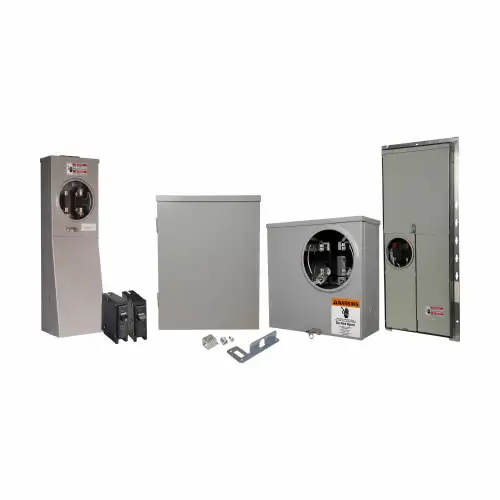Eaton BRN120A1CS circuit breaker is used in light commercial applications involving heating, air conditioning & refrigeration (HACR) equipment for protection against an arc fault / ground fault (AF/GF). The arc fault function of this unit can detect parallel & series arcs generated inside an electrical circuit, whereas ground fault function reduces the shock & electrocution risk in circuits.
Working Mechanism:
- Eaton BRN120A1CS detects both the arc fault (AFCI) and the ground fault (GFCI) inside its single device to trip the circuit.
- Users can understand the different trip causes using LED indicators on the unit.
- After troubleshooting the issue, the user can switch the circuit back On by pressing the single point of reset.
Features:
- Eaton BRN120A1CS is a BR Series breaker having a compact design with an additional gutter space for quick & easy installation.
- It reduces unwanted tripping caused due to an arc fault current interruption, blow-outs or sensitivity to VFD & high-frequency ground faults.
- This circuit breaker saves energy & remains cool as it consumes less power.
- It displays different diagnostic trip codes for easy troubleshooting / maintenance.
- This circuit breaker has a thermal-magnetic trip curve for reacting quickly to severe short-circuit conditions & overcurrent.
Compatible Accessories:
- Eaton BR Load Centres & Panels: This Eaton BRN120A1CS breaker can easily fit onto these Eaton BR Series load centres & panels for smooth operation.
Standards and Approvals:
- UL
- National Electrical Code (NEC)
Frequently Asked Questions:
Q. What are the different performance ratings of this Eaton BRN120A1CS circuit breaker?
A. Eaton BRN120A1CS breaker has a current rating of 20A, an interrupt rating of 10kAIC and a voltage rating of 120V.
Q. What is the number of poles available in this circuit breaker?
A. Eaton BRN120A1CS breaker is a single-pole circuit interrupter.
Q. What do the different trip codes signify in this circuit breaker?
A. This circuit breaker produces short LED blinks to indicate diverse trip codes. One blink shows a series arc, whereas 2 blinks indicate a parallel arc. 3 blinks denote a short delay instead of a short circuit, while the 4 blinks refer to overvoltage. 5 blinks are displayed to show ground faults, whereas 6 blinks denote the self-diagnostic test failure.
 Change Country
Change Country

 In Stock : 89 Units
In Stock : 89 Units
